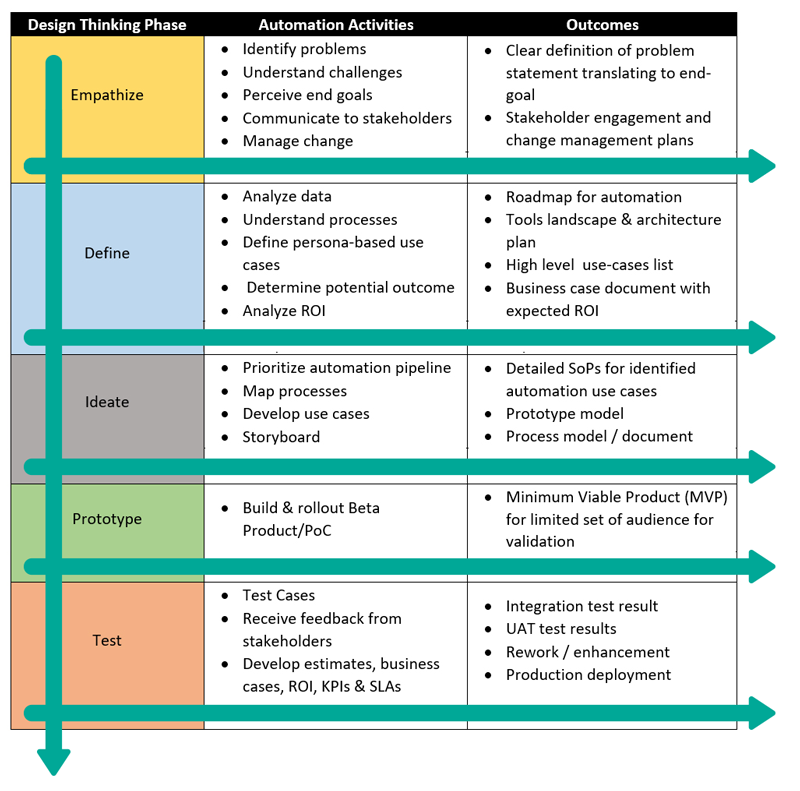Think about your best-in-class experiences as a consumer. From renting an apartment through Airbnb for your vacation to streaming a video on Netflix, it is certain that design thinking techniques contributed to those superior experiences.
There is no single definition for design thinking. At its core, design thinking represents a deep understanding of customer’s goal, envisaging various possibilities to meet the goal and finally creating innovative solutions to prototype and test.
The most widely accepted process of design thinking is from the Stanford d.school which comprises five iterative processes in design thinking including - Empathize, Define, Ideate, Prototype, and Test.
How can we apply Design Thinking to IT operations automation?
Today, we find that most organizations that have implemented automation are dissatisfied with the outcome and are looking to enhance the impact of automation to gear towards large-scale transformation. Such a problem statement requires a systematic approach to identify, assess and deploy automation while tracking the value of realization in parallel. Large-scale transformation will not be fully realized unless a scalable approach to IT operations automation is defined. Let us map design thinking process to required automation activities and understand if it helps in quicker realization of value from automation.

From the above table, it is evident that Design Thinking principles vastly contribute to facilitate planning of IT operations automation. This human-centric design process helps in shifting focus from individual task automation to end-to-end process automation resulting in large-scale transformation, higher returns and superior customer experience.
To know more about how you can start scaling automation projects with design thinking, reach out to us here
Priyank Jain
Automation Practice Manager – Cloud & Infrastructure Services, Wipro
Priyank is an Automation evangelist who is passionate about applying technology to solve enterprise IT problems and helping clients transform their automation journey. He has 12+ years of experience in the IT industry across various domains including Strategy, Business Planning, Automation, GTM, & sales enablement.

Enterprise business leaders need to deal with the new volatile, uncertain, complex and ambiguous

This paper provides an overview on how CIOs should transform the underlying elements of Datacenters – Infrastructure, Applications, People and Processes - to be able to quickly

Software Defined Networking (SDN) and Network Functions Virtualization (NFV) have revolutionized the world of networking. Virtualized Branch Networking with the power of hyper-convergence is the new approach that is geared-up to address the shortcomings.
